
Hokken
gamer level 6
11385 xp
11385 xp
followers
28
28
Use my invite URL to register (this will give me kudos)
https://boardgaming.com/register/?invited_by=hokken
profile badges




recent achievements

I'm a Gamin' Fiend!
Claim that you have played a game today by clicking the "Played Today!" button on a game page 200 times.
Claim that you have played a game today by clicking the "Played Today!" button on a game page 200 times.

Viscount / Viscountess
Gain 25 total followers
Gain 25 total followers

Intermediate Reviewer
Review 8 games and receive a total of 380 positive review ratings.
Review 8 games and receive a total of 380 positive review ratings.

Critic - Level 3
Earn Critic XP to level up by completing Critic Quests!
Earn Critic XP to level up by completing Critic Quests!
Player Stats
Critic (lvl 3)
775 xp
775 xp
Explorer (lvl 4)
2585 xp
2585 xp
Professor (lvl 2)
505 xp
505 xp
Reporter (lvl 1)
292 xp
292 xp
About Me
I am a musician, game designer and law sudent from Sofia, Bulgaria.
Boardgaming is exploding in popularity here in my country and I am happy and excited to share my hobby with more of my friends every day.
I've been gaming for the last 10 years or so. My band and my school don't allow me to play as much D&D, Warhammer and Magic as I did in the past so I'm moving on to quicker and more self-contained board games. I prefer Ameri-trash games with rich settings. I am usually aggresive and "in your face" as a player. I like games that are interactive and deep. I really value the art and flavor in a game and the stories told through gameplay.

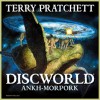
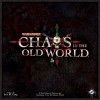








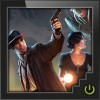

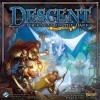

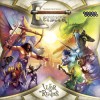






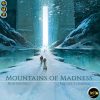











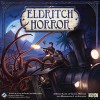

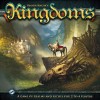











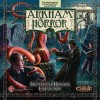





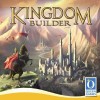



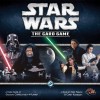





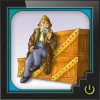



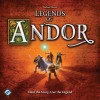

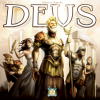





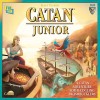


Ikusa
I’ve never played the previous incarnations of this game, so here’s a review by somebody who is new to Ikusa/Samurai Swords and the experiances I had.
What is Ikusa?
Ikusa is a big dudes-on-a-map area control game that is all about movememnt and fighting set in medieval Japan. It is basically a box of toy soldiers – with all the joy and fun you’d expect from one.
Goal
Players begin the game in different provinces and fight their way throughout medieval Japan concquering more. The goal is to control a set number of provinces (conveniantely represented by cards), which is different depanding on the number of players.
Rules
My first experiances were two-player games, which wasn’t optimal, because the game is meant to be played by 3+ people and two-player games come with some extra rules and tweаks. Once we wraped our heads areound the rules though, there was no doubt any more – we knew exactly what we’re doing from round 1. So I’d say – easy and clear enough. As always, having an experianced player teach you the game is a huge plus.
Mechanics are streamlined and easy to follow – you bid, then you move armies, then you fight.
Gameplay
As I already said earlier – this is an army-movment wargame. There isn’t too much oter than that, but trust me – you’ll be occupied with plenty of stuff to do and won’t feel bored.
At the start of the turn people select their actions (worker placement style) – they can reqruit new soldiers, hire neutral Ronins to help them, build fortifications or hire Ninjas to spy or kill other player’s generals. All of these are essential for success and this decisions are critical.
I love the battle system. Players get their army-cards which are outside the gameboard – Heroes of Might and Magic (the video games) style. The positions and distribution of your soldiers amongst your 3 armies is quite important. The whole army is represented by a single standard bearer figure on the tactical map. Once two armies clash, players roll 12 sided dice in a set initiative order to determine the end of the combat.
Outside of that movement and strategizing is essential, so players are forced to ally and betray each other all of the time. If you’ve read some of my other reviews you already know that I LOVE player screwage and Ikusa has planty of this. Delicious.
I’d also like to touch on the set-up side of things. It’s pain in the butt! Prepare at least 30 minutes of set up time before the game even begins. You have to place ALL the soldiers everywhere on the map and the army cards. This always takes a while. However, when the game is fully set-up it is very satisfying and cool to look at.
Player Interraction
There is nothing but player interraction in this game. It’s massive battle after massive battle. Ameri-trash goodness.
Theme
I am in no way expert in Japan and Japanese history, so I don’t know all the clans and families represented in the game, but my guess is they are represented well enough. The theme works beautifully. The game has little words like Koku and Daimyo that you start using immediately. This leaves a nice feeling and really can sparks one’s interest – I wanted to learn more about the real Samurai after every session of Ikusa.
Not to mention the game has 60+ province cards and that’s 60+ Japanese names you use all the time. It’s thematic and wonderful.
Components
Here we go. I heard that the previous versions had worse quality components. The ones in Ikusa have beautiful art and the sculpts of the toy soldiers (I refuse to call them miniatures) are good enough. That being said, pretty much everything is thinner and weaker than it should be. The little tokenbox provided bents everytime you touch it. The little screens used to hide your bids are also easily bent, the cards are thin. Of course these components can live forever if you touch them very gently (and I am super gentle when it comes to board games), but everything is – sadly – on the cheap side.
Final thoughts
If you like Japan and/or dudes-on-a-maps and/or tactical wargames and/or oldschool computer TBS and/or toy soldiers you will love Ikusa.
It is just all-around satisfying experiance. You watch your armies rise and fall, you learn things about Japan and you play with plastic soldiers. What’s not to love?
If I could cхnage anything – that would only be a quality upgrade for the components. Other than that Ikusa is simply a great game and I recommend it!